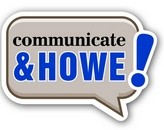On Monday night, I wrote three e-mails all related to a similar request. One to a nonprofit, one to a public sector utility and one to a private sector business.Each was sent through the e-mail link on its website.
How many responses did I get? Exactly one. From the nonprofit.
Nearly four days later, I’m still waiting to hear from the utility and the business. Can you imagine them letting their phone ring for four days? Or letting a walk in customer wait four days for attention? Never. So why does e-mail so often get ignored?
I’ll admit there are multiple ways to reach these organizations. But my preference is to use e-mail. If there is an e-mail address or contact form on an organization’s website, it’s a reasonable expectation that I’ll hear back from them and within one business day. I don’t believe that is unreasonable. Do you:?
I’m referring to a specific situation but it’s not the first time I’ve had this experience. There have been many others over the years and in some cases it cost them my business. My dentist’s office didn’t even know their website had an e-mail address people could use.
Is it any wonder I’m skeptical of an organization using social media as another point of contact. For too many organizations, it appears they already have too many and they shouldn’t be adding any more.
Tips for being responsive to e-mail
E-mail should be an effective way for you to communicate one-on-one with customers or supporters to meet their needs. It can also help you to establish or enhance your relationship with the sender. But too often when it’s coming from a website, it is unanswered and without being returned to send.
Here’s how:
- If you prefer not to be contacted by e-mail, don’t include an e-mail address, link or form on your website (or other material). You risk being criticized for it but if you’re not going to respond and quickly, it’s better not to lead people to expect a response with quick turn around. Just because everybody else has an e-mail contact option, doesn’t mean that it’s a must for you. There’s still a barber shop near me that continues to do good business without a phone. I’d suggest you’re best to have a phone and an e-mail address but that also means meeting the conventions of expected for having those tools.
- Check your website for e-mail addresses and ensure they are up to date. Someone (better yet some people) should know the e-mail options for contacting your organization that are used on your website and in other material. The same people should know what happens to the e-mail or form content. Where does it go? Is it forwarded? Who is expected to check it? I know in at least one case where I tried to contact a restaurant by e-mail, the only address I could find either went to the wrong person or someone who wasn’t there anymore. While it’s best to have a way of tracking this information and ensuring it stays up to date, you may not be in that position especially if these decisions were made before you took on your role.
Take a few moments now to see that your website e-mail options are working and have someone at the other end. If not, figure out how to fix them. For example:
- You may have a generic e-mail address being forwarded to someone. Is that address still working? Has it been updated everywhere it needs to be? Forms can have similar issues.
- Sometimes a generic e-mail address is set up as a standard e-mail address that requires someone to login and check it. Who is that person? Are they checking it at least once a day?
- Keep your e-mail contacts manageable. I’d err on the side of having keeping your primary e-mail contact process as simple as possible so that one day you don’t realize that there could be e-mails that have never be seen or had a response. For example, use a single e-mail address that gets forwarded to a specific role and when the person in that role changes, it’s flagged to update the forwarding.
- Respond within a business day. We’ve all seen a clerk answer the phone instead of serving us at the counter or one who allows the phone to interrupt. Why? Because the ring of a phone demands immediate attention. The lesson is make sure an e-mail contact also grabs the right person’s attention. Then respond as soon as possible and within one business day even if your response is an acknowledgement that the e-mail has been received and when a sender can expect a response and from whom.
There’s no rocket science here. It’s straight forward customer service. Make sure the expectations you set for your supporters or customers to use e-mail to communicate with you are met.
photo credit: Tim Morgan via photo pin cc
